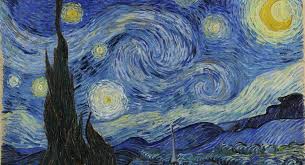LENINGRAD SCHOOL OF PAINTING (part 1)
 The history of the Leningrad school of painting covers the period from the beginning of the 1930s to the beginning of the 1990s. Having arisen in the midst of a heated struggle over the development of art and art education in the USSR, it became that missing link, thanks to which the traditions of the national art school and realistic painting were preserved and received a new development.
The history of the Leningrad school of painting covers the period from the beginning of the 1930s to the beginning of the 1990s. Having arisen in the midst of a heated struggle over the development of art and art education in the USSR, it became that missing link, thanks to which the traditions of the national art school and realistic painting were preserved and received a new development.
Having made a significant contribution to Soviet fine art, to the formation of aesthetic views and the spiritual world of modern generations, the Leningrad school left the stage at the turn of the 80-90s, fulfilling its historical and artistic mission and giving way to the era of the transitional period.
Its main external attributes are preserved. Having changed its name again, the Academy of Arts continues to train painters, graphic artists, architects, sculptors, restorers. After the division of property, the Leningrad Branch of the Union of Artists of the RSFSR became an independent Petersburg Union of Artists, retaining the historic building of the Society for the Promotion of Arts on Bolshaya Morskaya Street. However, the change in the social system, generations of artists, and artistic priorities themselves leave no doubt that the era of the Leningrad school has remained in the past, becoming the subject of close study and sometimes heated debate.
Whether its best traditions will be preserved and continued under the new conditions, what the relations between society, the state and art will be – the answers to these questions should be given by modern generations of artists.
The art of the first post-revolutionary years reflected the boiling of political life against the backdrop of deep economic ruin. The collapse of production and transport, the fall of trade, and the violation of money circulation caused by the events of 1917 and the ensuing Civil War and foreign intervention led to the collapse of the single all-Russian market and naturalization of the economy, to isolationism, lumpenization of society, and as a result to deformation of traditional forms of social consciousness.
A significant part of the population of industrial and cultural centers, including specialists and skilled workers, left without a livelihood and fleeing hunger, fled to the province or emigrated. At the same time, masses of the poorly educated population joined the active political and cultural life. The element of anarchy, threatening to overwhelm the country, raised to the surface in a huge number of all kinds of amateurs, experimenters and outspoken adventurers. The huge country, stretching from the Carpathians to the Pacific Ocean, was economically and culturally discarded for decades.
Soviet power was rapidly losing its social support. There was a real threat to the revolution. It was necessary to introduce in 1921 a new economic policy that allowed private entrepreneurship, revived trade, small and medium production, restored monetary circulation and prepared the transition to large-scale transformations in the sphere of economy and culture, which at the end of the 1920s was a very colorful picture that reflected achievements, costs, and fallacies of the post-revolutionary decade.
The emergence of the Leningrad school of painting in the early 1930s is not accidental. Firstly, it was Leningrad, where outstanding artistic forces were concentrated, that remained the center of attraction for creatively gifted young people who strove here from all over the vast country.
Secondly, by this time in the USSR the basic, fundamental methods of managing the economy and political system of socialist society had been developed, and organizational forms had developed that ensured the implementation of state plans for economic and cultural construction, in which Leningrad had a key role. In general terms, they existed unchanged until the beginning of the 1990s, adapting to new tasks and changing external conditions and ensuring socio-political stability. Their destruction in the early 1990s caused the destruction of the financing system and contractual relations in the field of fine art. The subsequent transition to a market model of the economy led to the disintegration and division of ownership of the Union of Artists. For the Leningrad school of painting, this meant, in particular, the elimination of the economic conditions of reproduction.
Finally, the formation of the Leningrad school was prepared by the processes that took place in the post-revolutionary period both within the artistic community and in the relations between artists, creative organizations and the state. If you take a closer look, it turns out that the prerequisites of many decisions of the early 1930s matured and were formed from the experience of the pre-revolutionary Academy, from repeated attempts to reform it, to come closer to the requirements of the new time.




